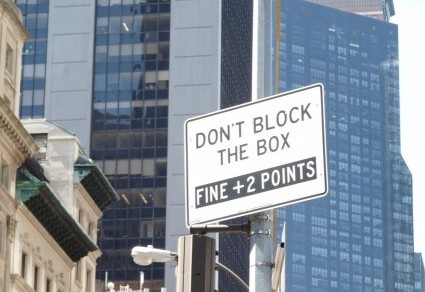A recent discussion on New York City’s public radio station repeatedly referred to “a new initiative” to reduce the number of traffic accidents. As someone who walks around the city every day, dodging bicycles (illegally) on the sidewalk and aggressive drivers in pedestrian crosswalks, I should have been listening carefully. Yet my mind drifted, caught by the phrase “new initiative.” I wondered whether there was such a thing as an “old initiative.”
My dictionary lists four definitions for “initiative,” the most appropriate in this context being “an act or strategy intended to resolve a difficulty or improve a situation; a fresh approach.” That last bit fits poorly with the adjective “new,” because then you’re talking about a “new fresh approach.” It’s worth noting, though, that the dictionary’s sample sentence refers to a “new initiative.” Why?
I was still trying to figure out the answer to this question when my husband snapped a photo of this sign:
Traditionally, a “tradition” is a custom passed along from generation to generation. How do you know you’re creating a “new holiday tradition”? By employing a soothsayer? If so, how much does that career pay? For some reason, it’s not listed in the Occupational Outlook Handbook published by the US government’s Bureau of Labor Statistics. I can’t imagine why. After all, this is a city in which the marketing campaign for a building under construction referred to the structure as “prewar.” (For non-NYers, let me explain that “pre-war” in a real estate ad generally means “built before World War II.”) Given the state of the world, it’s likely that everything, everywhere, at any point in time is pre- some sort of war, but still, you have to wonder what the builders foresaw.
Mulling all this, I finally came up with a theory. The desire to distance oneself from the past with a “new initiative” or to control the future by establishing a “new tradition” is hardwired into New Yorkers’ psyches. Notwithstanding the fact that the city sports a record-breaking concentration of psychotherapists plumbing our personal pasts, the city that never sleeps never stops changing, too. New Yorkers reinvent themselves and their city. It’s our tradition. Maybe we should slow down and savor what we already have. A change like that, though, requires initiative. New or not.














